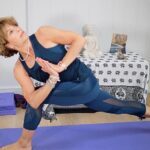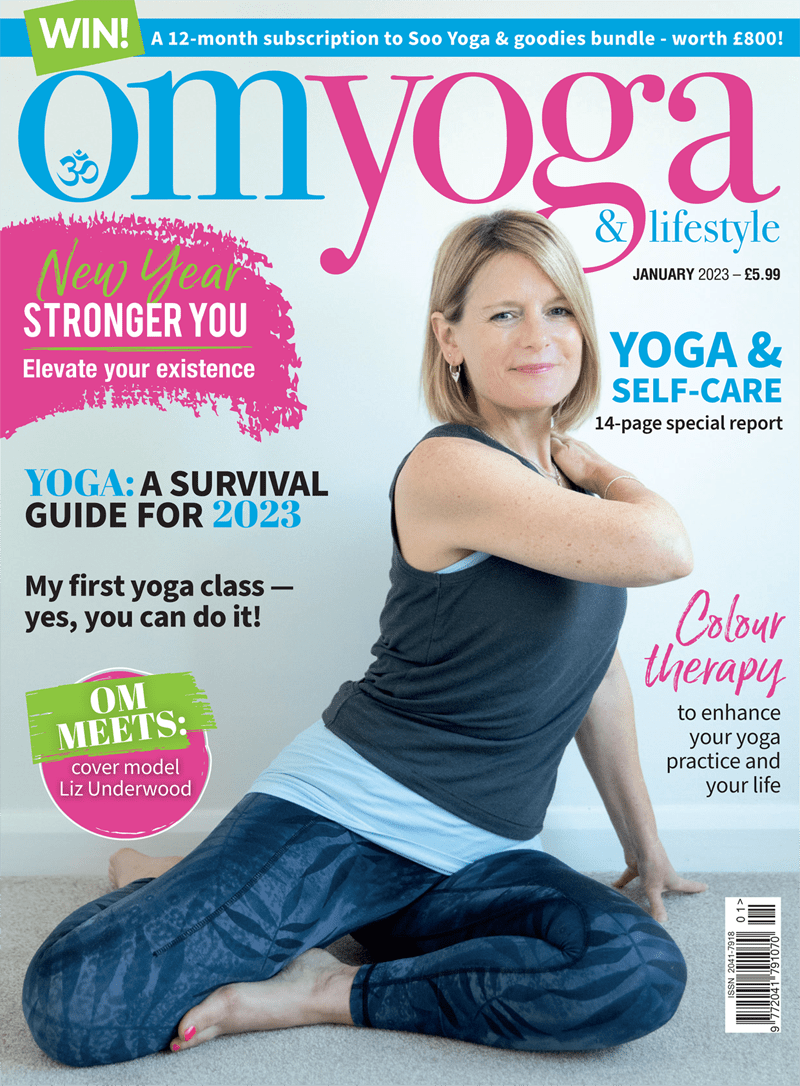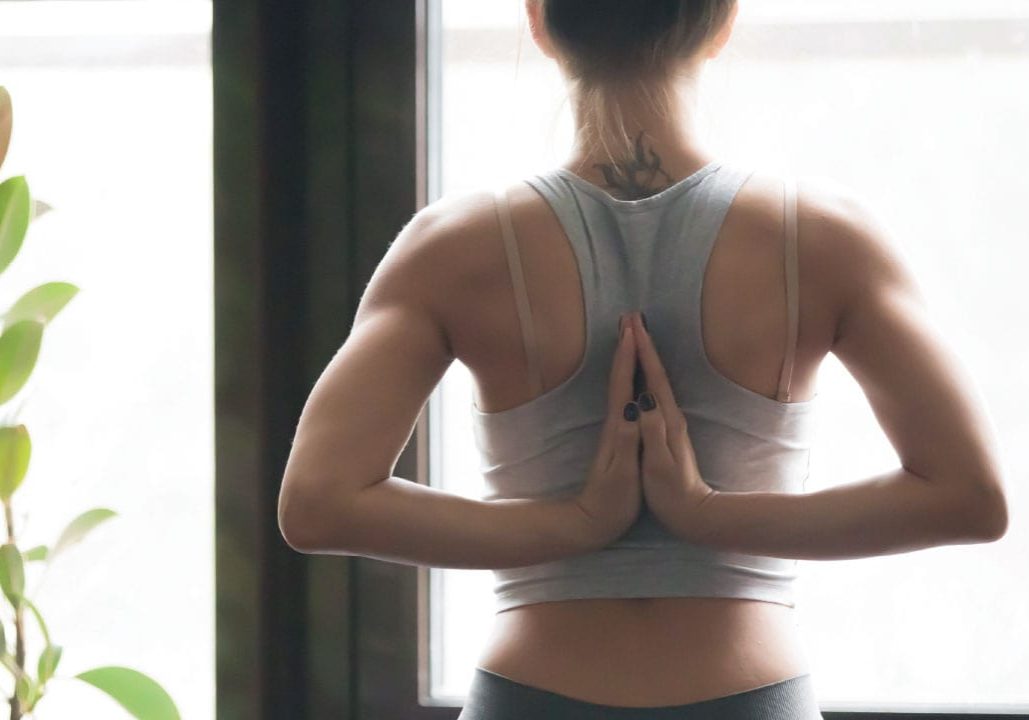
Building a better and stronger lower back
A short yoga sequence for nurturing and caring for your lower back. By Fenella Lindsell
As yoga students and teachers, I am sure lower back pain has made a number, if not many, appearances in your practice and classes. Rather than journeying through all the manifestations of lower back pain, my approach in this article is to explore how to prevent discomfort in the future.
This can be done very easily by working the hip flexors which insert under the diaphragm to the inner thigh, through the hamstrings in the back of the legs, the inner and outer core muscles, and by toning the glutes.
We focus too on increasing hip strength and mobility and by improving posture by relieving stiffness in the neck and shoulders.
You can follow the sequence below to practice alone or integrate into your classes if you are a teacher.
Start in a Semi Supine pose to rest your lower back and which can ease sciatic pain.
Hamstrings and glutes
We need to lengthen and strengthen the hamstrings so we start with Sethu Banhasana (bridge pose). (You can optionally interlace your fingers to draw the shoulders back and down.) This pose develops muscles in the backs of legs and the glutes (the largest muscle group in the body), together with relieving stiffness in the neck and upper back. Maintain parallel feet and thighs to keep a firm connection through the feet, notably the mound of the big toe, little toe and heel.
Core
We bring our awareness now to our inner core, as we take supine Supta Garudasana (eagle). Be aware of keeping the knees over the hips and take the elbows to knees as you press down into the lower back. This is an excellent way to strengthen the core without any lower back strain.
Repeat Sethu Bandhasana (bridge) and Garudasana (eagle) on the opposite side. In Sethu Bandhasana you can interlace the fingers with the other index finger on top to alternate the grip.
Now let’s explore the outer core now and the obliques. This can be modified and made more gentle by keeping the feet on the floor and making windscreen wiper-like movements with the feet on the floor or with knees over hips and feet off the floor. Students can be offered the option to extend the top leg away. Remember to listen to your body as you know it better than anyone else does!
Remain supine in Ardha Ananda Balasana (half happy baby pose) with left leg, continuing to strengthen the hamstrings as we prepare to lengthen them. A belt can be advantageous in alignment and often the support of a flat brick under the head can help to maintain length in the neck.
Supta Padangusthasana 1 (reclining hand to big toe), continuing to be aware of length in the neck and dropping the shoulders. Many students will benefit from keeping their head on a flat brick to help release and lengthen the fascia through the back of the body.
Hips
Sukirandasana (eye of the needle) to release into the left hip and maintain alignment with right hip and knee. Clasp around the right thigh and flex the left foot.
Take a supine twist with ankle on knee to the left to release tightness through the major hip flexor psoas muscle down the right side. Parsva Sukirandasana (supine twist) with cactus arms helps to open across the chest and shoulders. This also provides a rather lovely stretch across the lower back and the quadratus lumboram muscles which build stability in the pelvis and lower back.
Repeat on the right side. Encourage the use of the brick and to maintain length in the back of the neck.
It’s rather liberating to rock and roll backwards and forwards to gently massage all the muscles of the back.
Hip Flexors
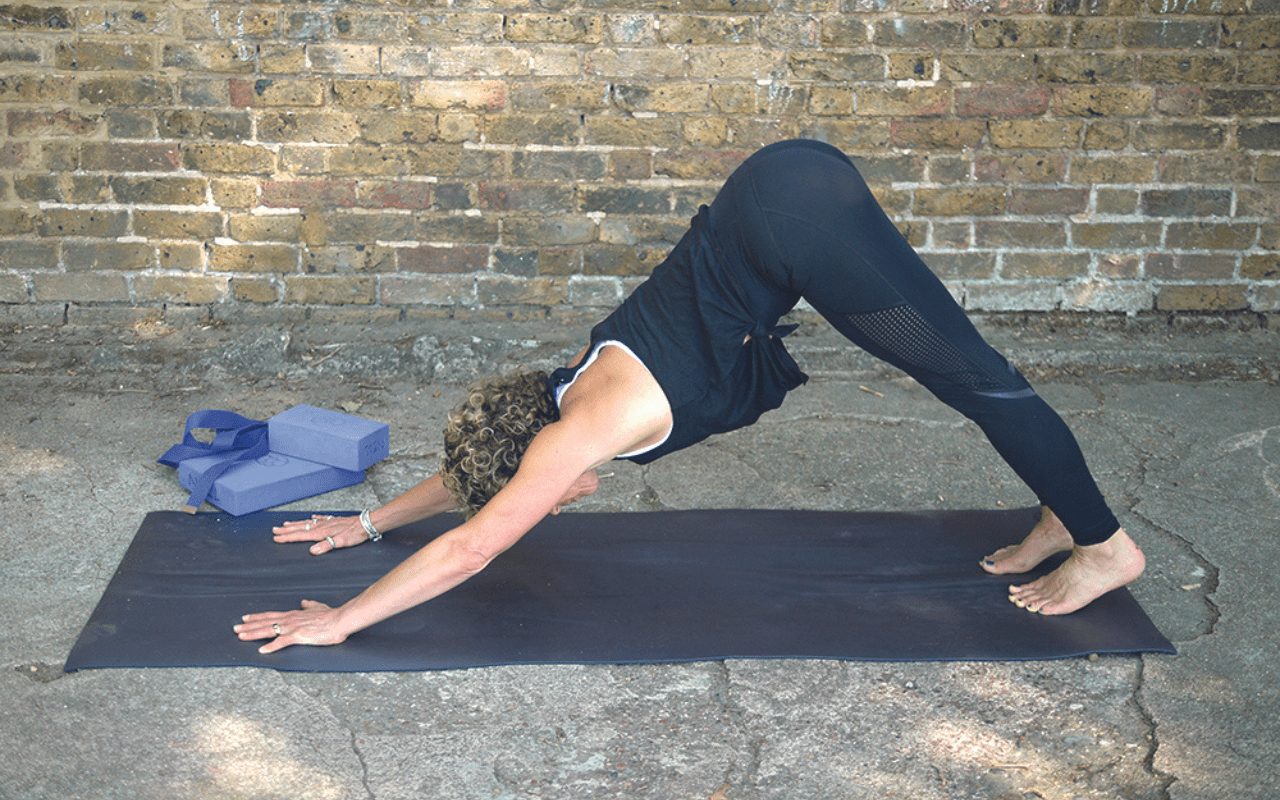
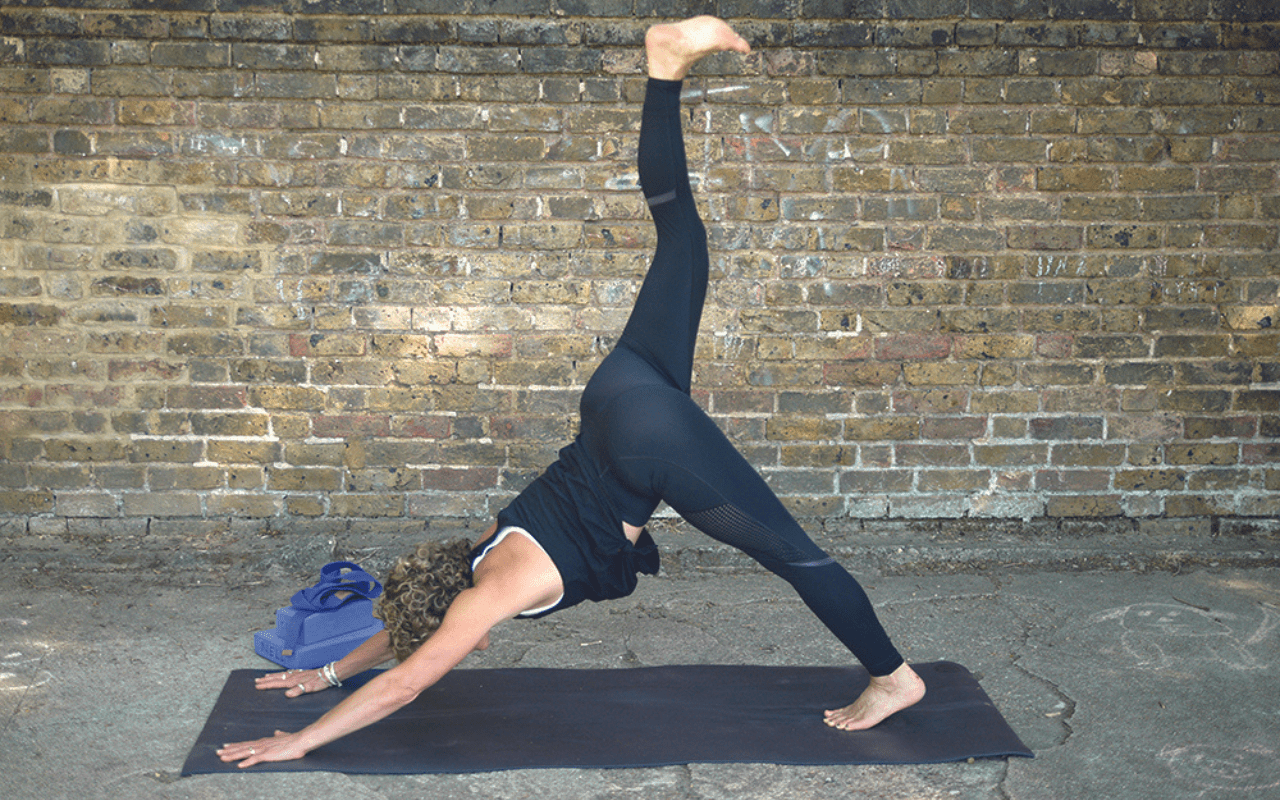
Spine and Core
Marijasana (cat stretch) and ensure alignment to keep stability around the elbow joints. Extend left heel and right arm, bringing awareness to the core and glutes. Inhale knees to nose and exhale extend. Five repetitions or more. Lift the inner thigh and hold the sole of the foot to the ceiling. Visualise a tray balanced on your foot. Cat curls lifting the knees. Repeat on the opposite side.
Hip swings to hydrate the hip joints and massage the lower back muscles.
Uttana Shioshasana (puppy dog pose) to release the upper back.
Adho Mukha Svanasana (downward facing dog) with a focus on taking the chest back to thighs to define the upward V shape. Draw ribs up and back, pressing down through the heels of the hands, lifting the abdomen to the spine and lower the inner heels of the feet down.
Eke Pada Adho Mukha Svanasana (three-legged dog) and step left foot forward between the hands. Here we use micro movements by keeping the hip over the knee on the back leg.
Three very small movements in a back arch.
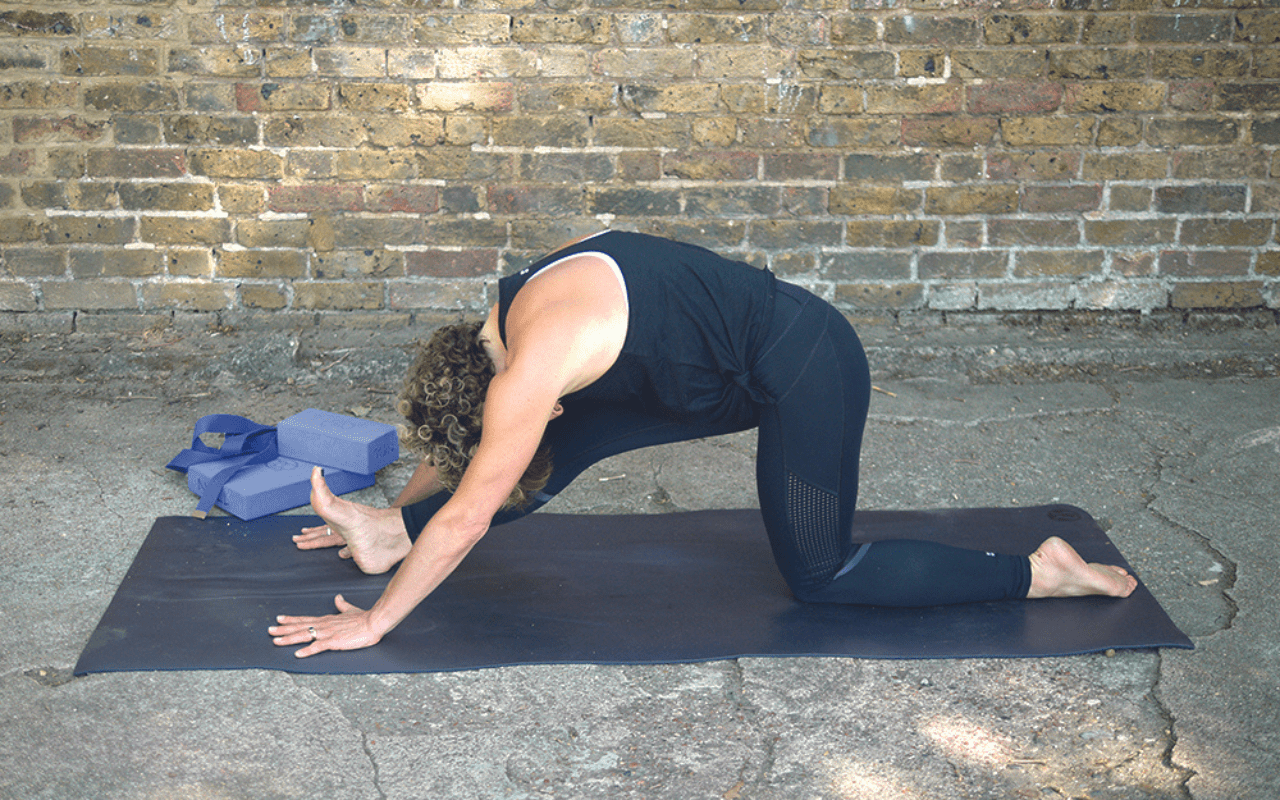
Outer Core
Three lateral extensions to left and then to right, releasing stiffness in the psoas muscles and turning to the left, three small movements. A brick can be helpful to offer support as you laterally extend.
Ardha Hanumanasana (half runners stretch) for three breaths.
Step back to Adho Mukha Svanasana (downward facing dog) and then to Khumbakasana (plank).
Back Muscles
Salabhasana (locust pose) and repeat on the other side.
Resting in Balasana (child pose) or Uttana Shioshasana (puppy dog). Micro movements allow a release through the muscles of the lower back.
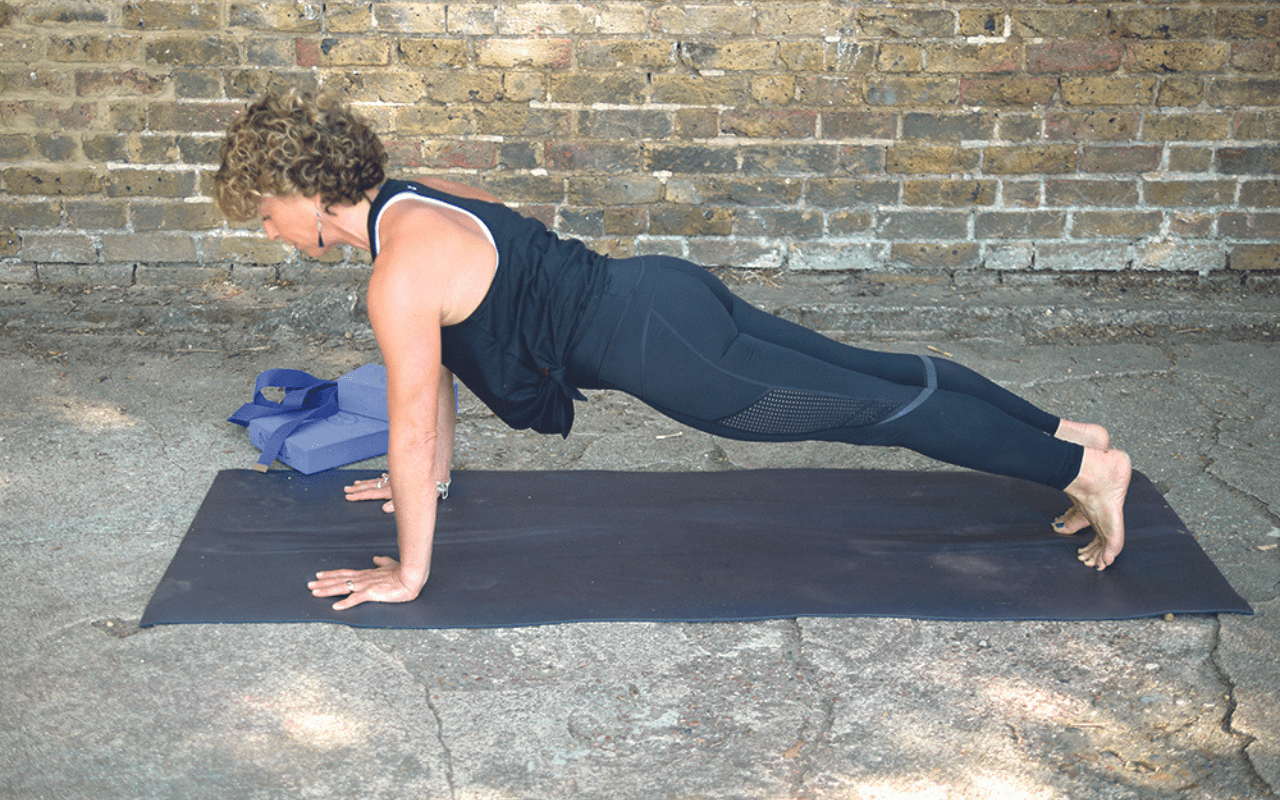
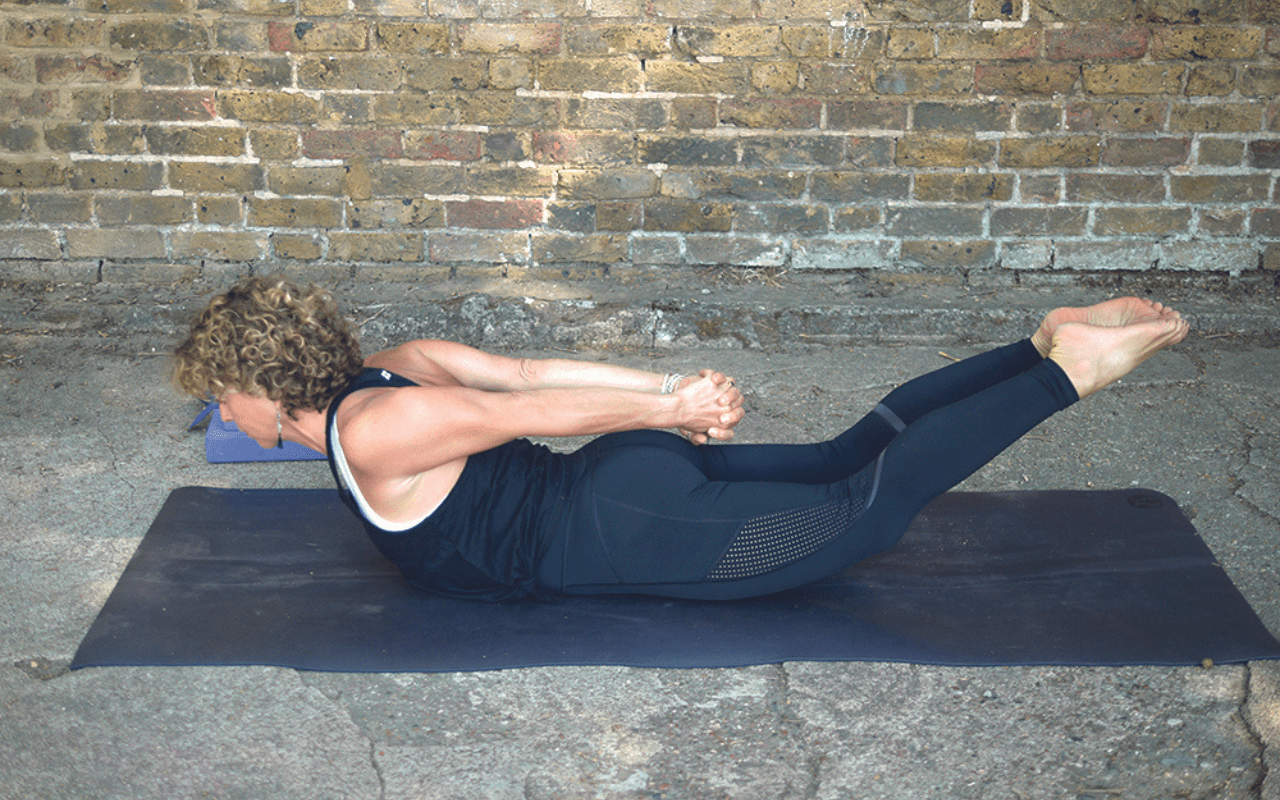
Fenella Lindsell has been teaching yoga in south-west London for 32 years. She runs yoga holidays in the UK and abroad and works with Three Trees Yoga in Seattle, USA on a blended learning 200 hour Yoga Alliance accredited teaching training course. Visit: yoga-forever.com
This sequence is also available as a 20-minute video. Please contact Fenella Lindsell direct at
nell@yoga-forever.com to receive your free copy.

